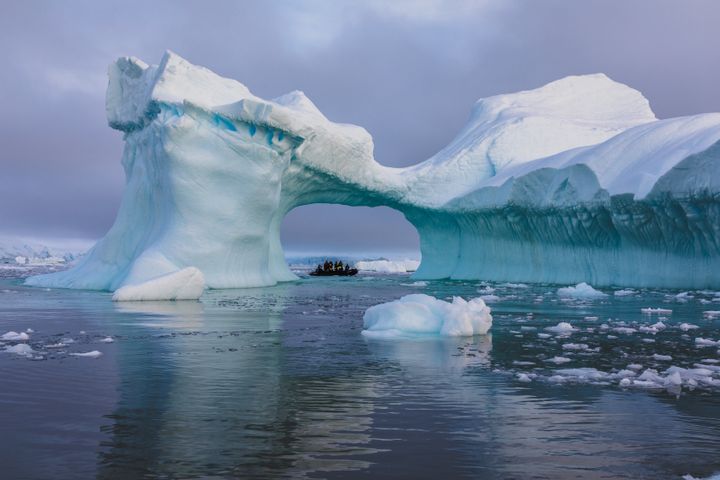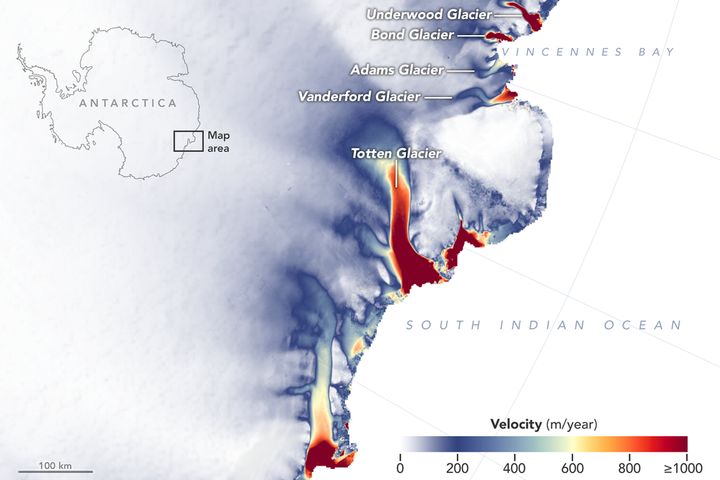
Experts have detected the first signs of significant melting in a patch of glaciers in east Antarctica, according to a report by NASA
New detailed maps of ice velocity and elevation released by the organisation show glaciers spanning one-eighth of the region’s coastline have begun to lose ice over the past decade, suggesting widespread changes in the ocean.
If this trend continues it will spell huge consequences for future sea levels.
Should the glaciers in this particular sector of Antarctica melt, there would be enough ice in the drainage basins to raise the height of the global oceans by 28 metres.
“That’s the water equivalent to four Greenlands of ice,” said Catherine Walker, from Nasa’s Goddard Space Flight Centre in Greenbelt, Maryland.
The glaciologist has been documenting her findings at the Fall Meeting of the American Geophysical Union (AGU).
In recent years, researchers found that Totten Glacier, a behemoth that contains enough ice to raise sea levels by at least 11ft, appears to be retreating because of warming ocean waters.
Now, analysts have found that a group of four other glaciers sitting to the west of Totten, plus a handful of smaller glaciers farther east, are also losing ice.

It is thought that the reason for the melt is likely to be warm water that is being pulled up from the deep by shifting sea-ice and wind patterns in the region.
“The change doesn’t seem random; it looks systematic,” said Alex Gardner, a glaciologist with NASA’s Jet Propulsion Laboratory in Pasadena, California.
“And that systematic nature hints at underlying ocean influences that have been incredibly strong in west Antarctica. Now we might be finding clear links of the ocean starting to influence east Antarctica.”
Gardner anticipates that, over the next five to 10 years, there will be yet more observationally driven discoveries, with developments in technology and data accessibility.
